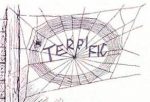A recent post on scientificamerican.com got my attention – no surprise given its title, Could Multiple Personality Disorder Explain Life, the Universe, and Everything. It was coauthored by three individuals: computer scientist Bernardo Kastrup, Psychotherapist Adam Crabtree, and cognitive scientist Edward F. Kelly. The article’s major source is a paper written by Kastrup, published this […]
|
|||||
|
My thoughts started jumping around today, trying to land on what it was that I found so fascinating about a recent article in Quanta Magazine. This is one of the statements that got me going: …Numbers emerging from one kind of geometric world matched exactly with very different kinds of numbers from a very different […] A recent article in Quanta Magazine anticipates the publication of the 6th edition of Proofs from The Book, collected by Martin Aigner and Günter Ziegler. The original volume was inspired by the well-known and prolific mathematician Paul Erdős, who traveled the world, participating in countless collaborative efforts, and who would say of proofs that he […] I have been particularly concentrated on whether mathematics can tell us something about the nature of thought, something that we have not yet understood about what thought is made from, how it happens, how it is connected to everything else in the universe. These questions inevitably point me in the direction of research in cognitive […] I find the relationship between mathematics and vision fascinating. Even within mathematics itself, seeing how the geometric expression of ideas can clarify or further develop countless mathematical thoughts is always worth noting – like the graphs of functions, or the projections of figures. I’ve written before about the relationship between the brain’s visual processes and […] 
The slow and steady march toward a more and more precise definition of what we mean by information inevitably begins with Claude Shannon. In 1948 Shannon published The Mathematical Theory of Communication in Bell Labs’ technical journal. Shannon found that transmitted messages could be encoded with just two bursts of voltage – an on burst […] The Riemann Hypothesis came to my attention again recently. More specifically I read a bit about the possibility that quantum mechanical measurements may provide a proof of a centuries-old hypothesis and one of mathematics’ most famous enigmas. Within mathematics itself, without any reference to its physical meaning, the Riemann Hypothesis highlights the kind of […] 
Both Quanta Magazine and New Scientist reported on some renewed interest in an old idea. It was an approach to particle physics, proposed by theoretical physicist Geoffrey Chew in the 1960s, that ignored questions about which particles were most elementary and put a major portion of the weight of discovery on mathematics. […] Not too long ago I wrote about entropy, and what has come to be known as Maxwell’s demon – a hypothetical creature, invented in 1871 by James Clark Maxwell. The creature was the product of a thought experiment meant to explore the possibility of violating the second law of thermodynamics using information to impede entropy […] When I read the subheading in a recent Scientific American article, it brought me back to some 18th century thoughts which I recently reviewed. The subheading of a piece by Clara Moskowitz’s that describes a new effort in theoretical physics reads: Hundreds of researchers in a collaborative project called “It from Qubit” say space and […] |
|||||
|
Copyright © 2025 Mathematics Rising - All Rights Reserved Powered by WordPress & Atahualpa |
|||||


Recent Comments